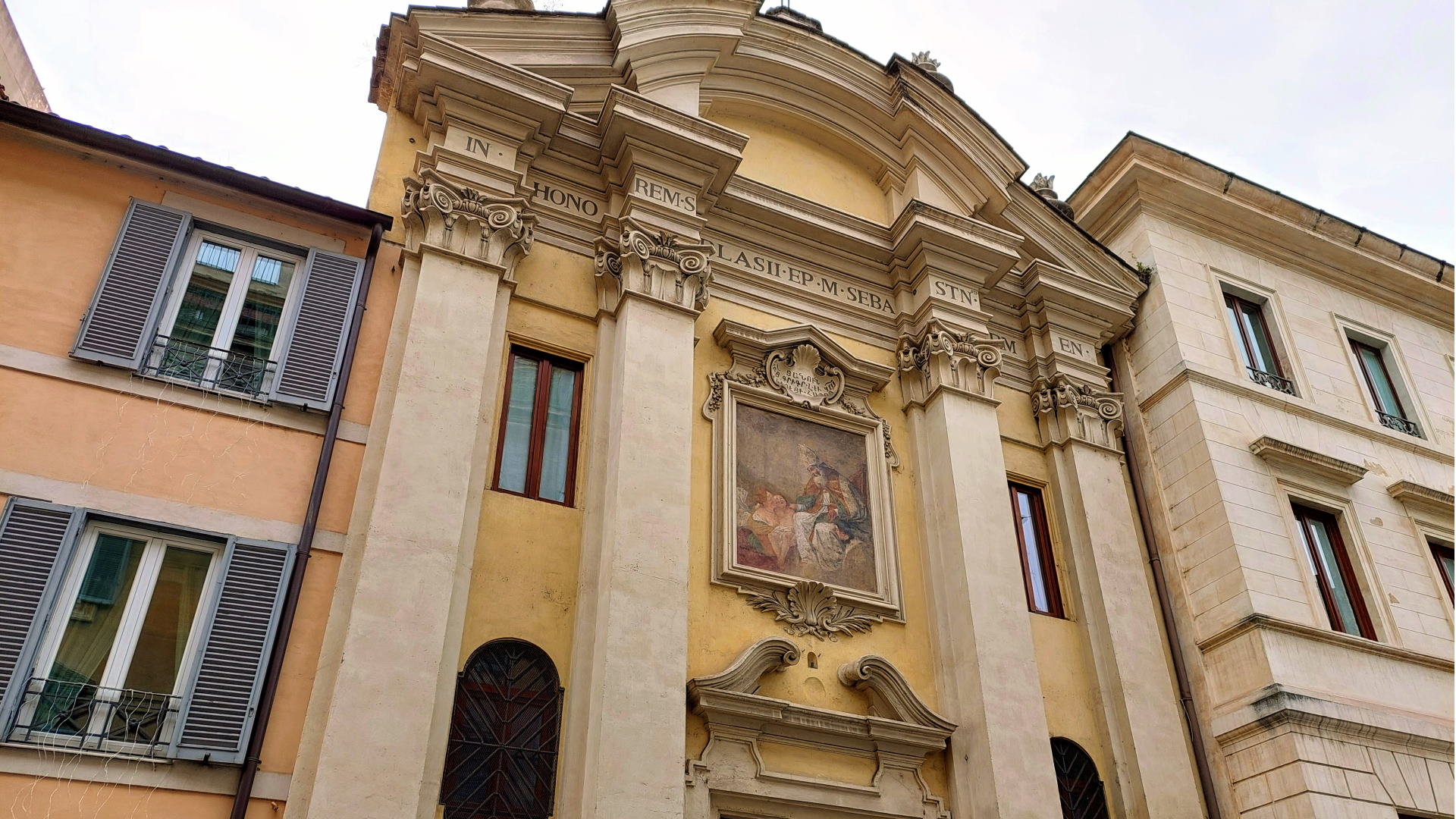
An inscription in the Armenian alphabet placed above the entrance door welcomes visitors to the beautiful little church overlooking Via Giulia, the elegant long street of the Rione Ponte designed in 1508 by Bramante for Pope Julius II. However, the church has even older origins, possibly dating back to the 10th century, and an inscription kept inside the church and dated 1072 recalls its reconstruction by the abbot of the then adjoining small Benedictine monastery.
Precisely from the 11th century onward, the cult of the saint to whom the church is still dedicated had meanwhile begun to spread in the city: bishop of Sebaste, in what was then Armenia Minor, Blaise was reportedly martyred in the early 4th century, and his executioners would tear his flesh with sharp carding combs before beheading him. The patron saint of mattress makers and wool combers by virtue of the unusual instruments of his martyrdom, St. Blaise is, however, invoked above all as the protector of throat diseases: before his death, he is said to have performed one last miracle, saving a young boy who was choking on a fishbone that had lodged in his throat.
The miracle of St. Blaise is depicted in the fresco that adorns the simple façade remodeled in the early 18th century by Giovanni Antonio Prefetti, who rebuilt the church, giving it its present form. A fresco by Pietro da Cortona and a 17th-century image of Our Lady of Grace are preserved in the interior, which was completely redone in 1832 by architect Antonio Navone.
The official name of the church, entrusted by Pope Gregory XVI to the Armenian clergy in 1836, also dates back to the first half of the 19th century. The nickname by which the church is more popularly known in Rome is attested however from the 14th century: San Biagio della Pagnotta, a name that derives from the bread that the monks distributed to local poor people and which is still offered to the faithful in the form of small blessed loaves on 3 February, the saint’s feast day. On the same occasion, a fragment of the martyr’s throat is displayed for devotion, placed by the door for the faithful to kiss it.
Information
For the timetable of the masses and visiting conditions, please consult the contacts.
 Condividi
Condividi
Location
To find out about all accessibility services, visit the Rome accessible section.











































